2007.07.11 16:45
Verb: Featured Discussion
Is it all still pretty operative criticism?
Perhaps architectural criticism needs to begin operating differently where:
some criticisms are extreme™
some criticisms are fertile™
some criticisms are pregnant™
some criticisms are assimilating™
some criticisms are metabolic™
some criticisms are osmotic™
some criticisms are electro-magnetic™
some criticisms are total frequency™
But maybe that will only happen when (we begin to realize that):
some architectures are extreme™
some architectures are fertile™
some architectures are pregnant™
some architectures are assimilating™
some architectures are metabolic™
some architectures are osmotic™
some architectures are electro-magnetic™
some architectures are total frequency™
2007.07.11 17:52
Verb: Featured Discussion
C(riticism) = m(ainstream)Ad(vertising)²
2007.07.11 17:03
Fungi to the rescue again
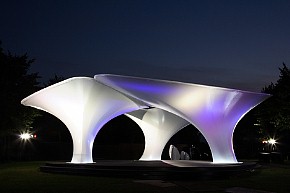

Fungi to the rescue again.
| |
2007.07.11 18:57
Sarcastic Architecture
Are there any examples of sarcastic architecture?
Not satiric nor ironic, specifically sarcastic.
maybe this?
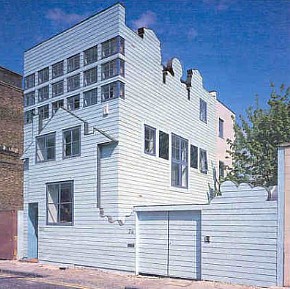
2007.07.11 19:40
Sarcastic Architecture
sarcasm
1. A cutting, often ironic remark intended to wound.
2. A form of wit that is marked by the use of sarcastic language and is intended to make its victim the butt of contempt or ridicule.
Makes me think of this:
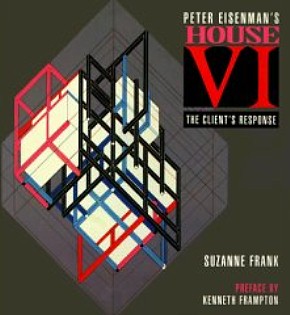
2007.07.11 20:24
Sarcastic Architecture
In light of "a cutting, often ironic remark intended to wound," Part II: Ugly and Ordinary Architecture, or the Decorated Shed in Learning from Las Vegas may indeed be well spiced with sarcasm. Personally, I haven't read the text in quite some time, but in just scanning it now, there is a fair bit of "cutting" critique. Should make for an interesting re-read this time around.
2007.07.11 21:24
Sarcastic Architecture
Is there maybe then some sarcasm to be found in some Rossi architecture?
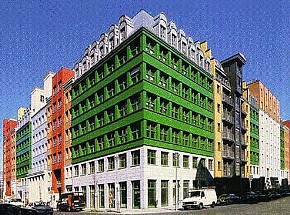
| |
2007.07.11 21:10
Sarcastic Architecture
Unwitting sarcasm in some early proposals for the Ground Zero area?
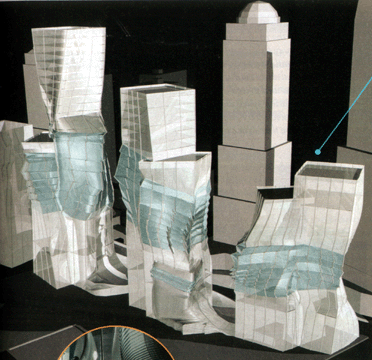 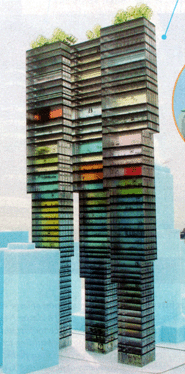
2014.07.11 16:42
Art + Architecture: Schumacher vs. Post-Net
Re: favorite book:
Thanks to the enormous scans within some really incredible online archives, I'm, just for about a month now, becoming very familiar with the volumes of post-Piranesi Italian archaeologists. For example,
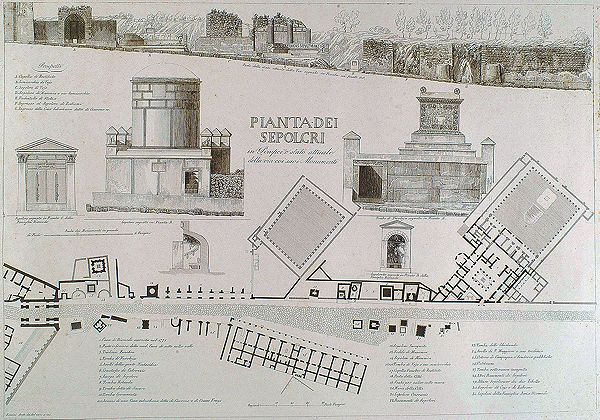
The great multitude of drawings filled with all their fine detail just seem to fulfill some innate longing of mine. And I'm finding myself not at all bothered if some of the 'reconstructions' are not actually correct because I'm enjoying all the data as a unique and kind of atemporal/fictitious virtual environment.
And a book that I'm presently dissecting (literally) to discovery the full workings of it's 'anatomy' is Hejduk's Pewter Wings, Golden Horns, Stone Veils: 5518.
And one of my favorite things to do, for almost 18 years now, is compose and publish 'books' via html and the internet.
2011.07.11 12:03
Question about Charles Jencks' Declaration
"Moreover, its Purist style, its clean, salubrious hospital metaphor, was meant to instill, by good example, corresponding virtues in the inhabitants. Good form was to lead to good content, or at least good conduct; the intelligent planning of abstract space was to promote healthy behavior."
It was indeed such naiveté that "died."
I just happened to have reread the first 15 pages of The Language of Post-Modern Architecture (revised enlarged edition, 1977) last week, and was surprised by how much of Jencks' actual argument has been (irresponsibly?) forgotten.
(My argument is that) Since 15 July 1972, architecture has been in an excessively prolonged period of mourning. The 'fancy-dress' was only part of the beginning. I'll be celebrating the anniversary this Friday via reenactment, of course.
| |
2011.07.11 13:01
Question about Charles Jencks' Declaration
Jencks has a vast bibliography, and when you go back and actually read his texts, you find he's a quite good historian. His grasp of an immense amount of material alone is almost enough to garner full respect, but he also processes the material most adroitly. It really isn't as facile as it looks.
As you read The Language of Post-Modern Architecture, always keep in mind the first two paragraphs of the 'Introduction'.
The last sentence of paragraph one: Like its progenitor the [Post-Modern] movement is committed to engaging current issues, to changing the present, but unlike the avant-garde it does away with the notion of continual innovation or incessant revolution.
The last sentence of paragraph two: The buildings most characteristic of Post-Modernism show a marked duality, conscious schizophrenia.
Regarding 'language' (from the fifth to last paragraph of the 'Introduction':) Modern architecture suffered from elitism. Post-Modernism is trying to get over that elitism not by dropping it, but rather by extending the language of architecture in many different ways--into the vernacular, towards tradition and the commercial slang of the street. Hence the double coding, the architecture which speaks to the elite and the man on the street.
2011.07.11 15:19
Question about Charles Jencks' Declaration
It wasn't the Purist aesthetic that died with Pruitt-Igoe, rather the Modernist notion that "good form was to lead to good content, or at least good conduct; the intelligent planning of abstract space was to promote healthy behavior" is what died.
Calling out the implosion of several blocks of the Pruitt-Igoe Housing as an historic event and marker of a paradigm shift was rather astute on Jencks' part. I wonder how many other Modernist projects only 17 years old have succumb to implosion prior to that of Pruitt-Igoe. For sure, many fairly young Modernist projects have been imploded since Pruitt-Igoe, but is Pruitt-Igoe perhaps still the youngest Modernist project to have ever been imploded. And, I wonder, how many housing projects like Pruitt-Igoe have been built since the implosion of Pruitt-Igoe. I'd guess very few if not none in the United States, but perhaps such projects remained (or even still remain) in production in lands under Communist regimes.
I was eye-witness to the world's largest building implosion (the roughly 70 years old Sears Philadelphia Headquarters, 1994). It happened so close to where I lived I walked to see it. What's most striking about a building implosion is the immediate and paradoxical manifestation of absence. Jencks advocated that the ruins of the Pruitt-Igoe implosion should remain as "a great architectural symbol. It should be preserved as a warning." Well, I don't think the ruins were preserved, so all that's left are pictures and absence. I think it's fair to say that the implosion of Pruitt-Igoe left behind a certain absence within Modernist ideology as well
2011.07.11 20:49
Question about Charles Jencks' Declaration
Jencks: "Several slab blocks of this scheme were blown up in 1972 after they were continuously vandalized. The crime rate was higher than other developments, and Oscar Newman attributed this, in his book Defensible Space, to the long corridors, anonymity, and lack of controlled semi-private space. Another factor: it was designed in a purist language at variance with the architectural codes of the inhabitants."
13071101 Electronic Calculation Center Olivetti plan scans elevation/sections scans 2195i02
13071102 Electronic Calculation Center Olivetti model 2195i03
16071101 IQ60/14 Campo Rovine House 15 Palais House 10: Museum plans 6460i11
16071102 IQ60/15 Campo Rovine Parkway Interpolation Ur-Ottopia House plans 6460i12
16071103 IQ60/16 Parkway Interpolation plans 6460i13
16071101 Burgueño Díaz Complejo Hotelero y Centro Cultural y de Ocio New Gourna
18071101 CCTV elevations work 2332i13
18071102 Plan Obus plan IQ32 image 2162i02 b
19071101 Museum for Nordrhein Westfalen aerial perspectives 2226i41
21071101 mirror-copy is001-004 009-010 plans @ iiq05 2499i05
21071102 mirror-copy is001-010 plans @ iiq05 2499i06
|